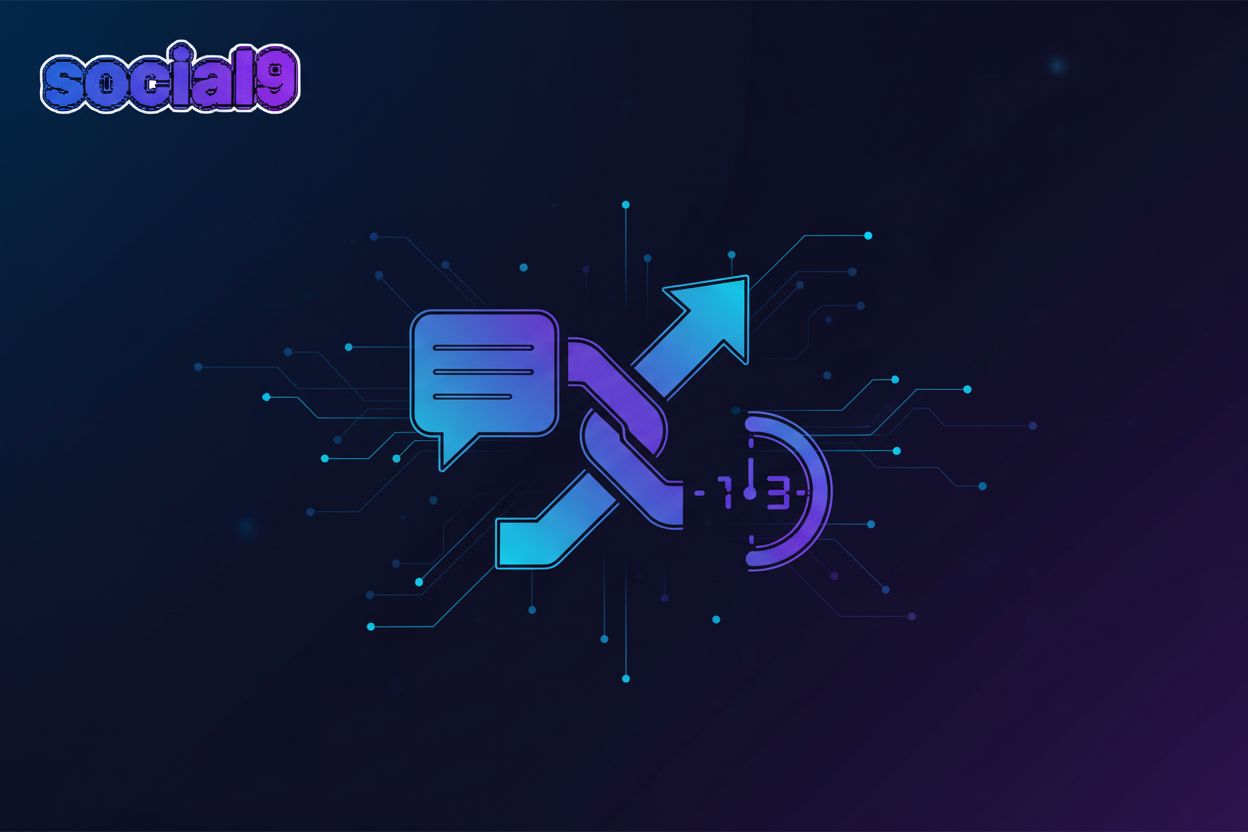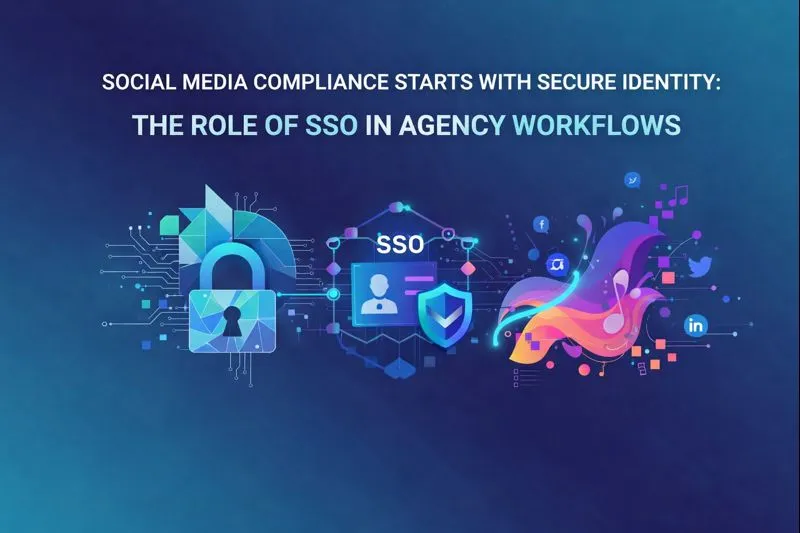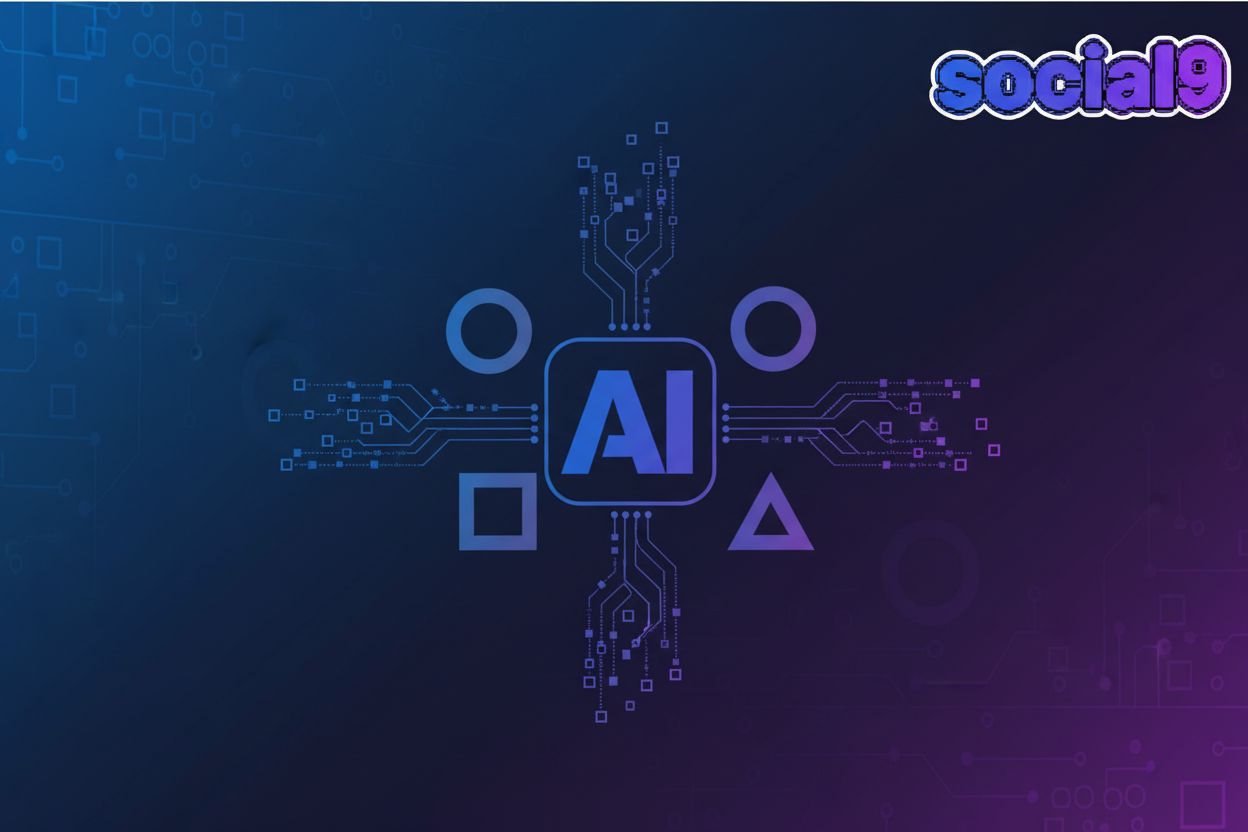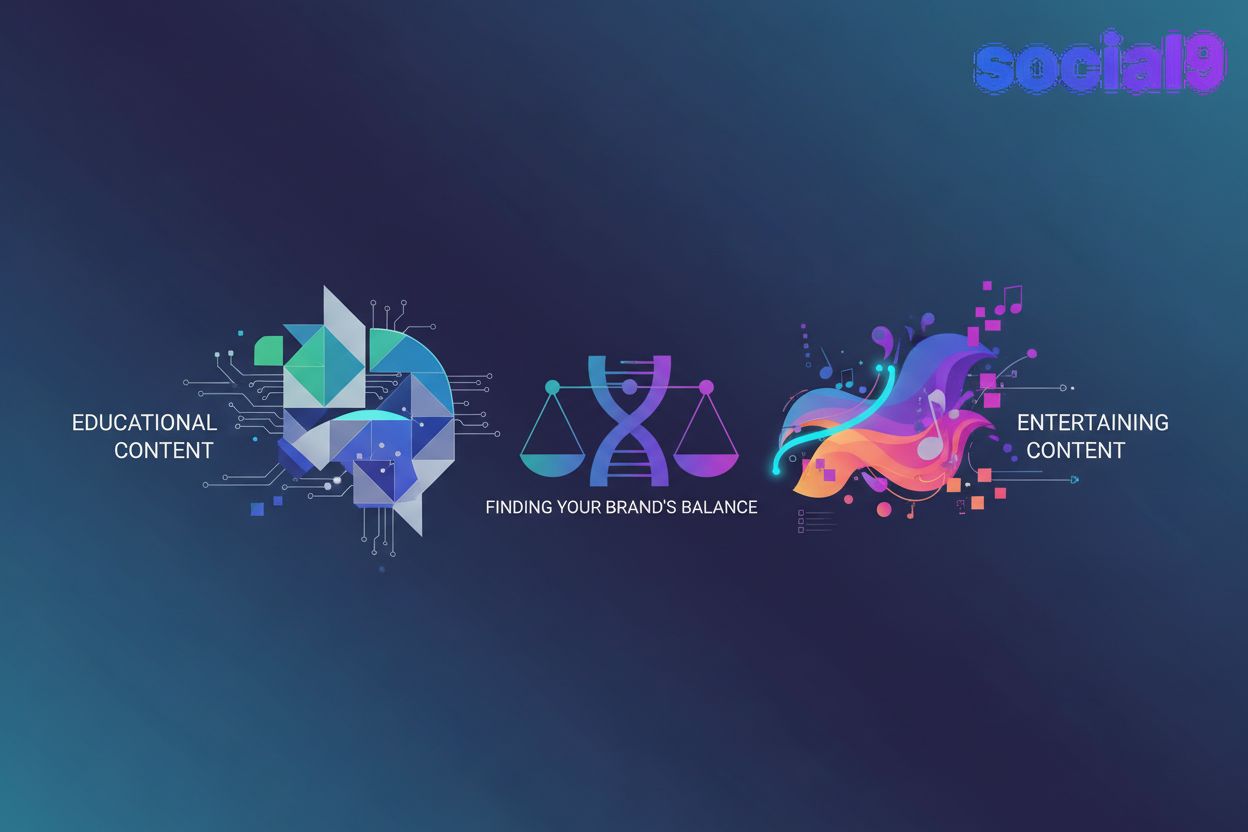Hyper-Personalized Ad Copy Generation: The AI Revolution for Content Creators
The Rise of Hyper-Personalization in Advertising
Are you tired of generic ads that feel like they're talking to someone else? Hyper-personalization is here to change the game, and it's a must for content creators looking to stand out. It's about creating ad copy that speaks directly to each individual, making them feel understood and valued.
Hyper-personalization moves beyond basic personalization like using a customer's name. It leverages real-time data, behavioral analysis, and predictive analytics to treat each customer as a segment of one. This means tailoring experiences to their unique preferences and needs.
- Customer expectations are rising. Consumers now expect personalized experiences, and generic ad copy just doesn't cut it anymore. According to one report, 71% of consumers expect to be treated personally. (The value of getting personalization right—or wrong—is ...)
- Generic ads lead to lower engagement. If your ad copy isn't relevant, people will simply tune it out, leading to lower ROI.
- Hyper-personalization offers a competitive edge. Dripify.io notes that hyper-personalized outreach can help you connect with prospects, build trust, and ultimately close more deals. (Hyper-Personalized LinkedIn Outreach)
- Hyper-personalization is not a luxury. It is the only way for companies to stay relevant in the market.
As Salesmate.io puts it, in a world flooded with generic messages, customers no longer appreciate personalized experiences—they expect them. (What Is CRM Hyper-Personalization? A 2025 Growth Guide)
Traditional ad copy relies on static data and basic segmentation, leading to generic recommendations. In contrast, hyper-personalized ad copy uses real-time data, dynamic micro-segmentation, and AI-powered suggestions. The shift is from scheduled outreach to trigger-based, real-time interactions.

By adopting hyper-personalization, content creators can create more engaging and effective ad campaigns. Now that we've seen why it's so important, let's dive into how ai actually makes it happen.
How AI Powers Hyper-Personalized Ad Copy Generation
AI is revolutionizing advertising, but how exactly does it work? Let's dive into the nuts and bolts of how AI powers hyper-personalized ad copy generation.
The first step is gathering data from various sources. This includes:
- Web behavior: Tracking how users interact with your website, which pages they visit, and how long they stay.
- Email interactions: Analyzing email open rates, click-through rates, and responses to different types of content.
- Social media activity: Monitoring likes, shares, comments, and overall engagement with your social media posts.
AI then analyzes these patterns to predict customer needs. For example, if a user frequently visits pages about hiking boots, the ai can predict that they might be interested in related products like hiking socks or backpacks. This prediction is often done using machine learning models, specifically classification algorithms (like logistic regression or decision trees) to categorize users based on their behavior, or clustering algorithms (like K-means) to group similar users together. Deep learning models, such as recurrent neural networks (RNNs), can also be employed to understand sequential user behavior over time.
It's also crucial to emphasize the importance of privacy and ethical data handling. Transparency about data collection and usage builds trust with customers. AI systems can be designed with privacy-preserving techniques like differential privacy or federated learning to analyze data without directly exposing individual information.
With data in hand, AI can generate ad copy variations tailored to specific audience segments. This goes beyond simply inserting a customer's name; it involves crafting messages that resonate with their unique interests and preferences.
- Generating ad copy variations: This is typically achieved using Natural Language Generation (NLG) models. Large Language Models (LLMs) like GPT-3 or BERT are trained on massive text datasets and can generate human-like text. They can be fine-tuned to produce ad copy based on specific prompts, keywords, and desired tones, creating multiple variations by slightly altering prompts or using sampling techniques.
- Optimizing ad copy in real-time: This often involves reinforcement learning (RL). An RL agent learns by trial and error, receiving rewards for successful ad performance (e.g., high click-through rates) and penalties for poor performance. The agent continuously adjusts ad copy parameters to maximize these rewards, making dynamic changes on the fly.
- Using AI image generation: Technologies like Generative Adversarial Networks (GANs) are used here. GANs consist of two neural networks—a generator and a discriminator—that compete against each other. The generator creates images, and the discriminator tries to distinguish them from real images. This process allows for the creation of novel, contextually relevant visuals for ad campaigns.
AI steps in to predict customer intent and personalize ad copy accordingly. For instance, ai can analyze a customer's past purchases and browsing history to predict what they might want to buy next.
- Tailoring product offers: Providing personalized recommendations based on spending patterns.
- Delivering targeted information: Aligning content with a customer's past interactions.
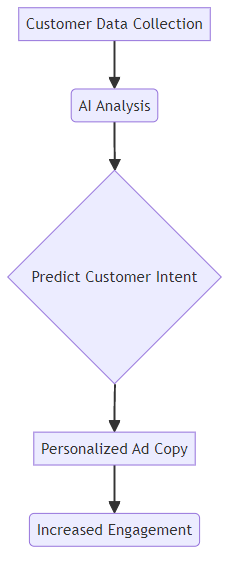
By leveraging these AI-powered capabilities, content creators can craft ad campaigns that resonate deeply with their audience. Next, we'll examine the specific benefits of this approach.
Benefits of AI-Powered Hyper-Personalized Ad Copy
Imagine receiving an ad that feels like it was created just for you. That's the power of AI-powered hyper-personalized ad copy, and it's transforming how content creators connect with their audiences.
Delivering the right message at the right time through the right channel is key to a positive customer experience. When ad copy resonates with individual needs, it creates a seamless and engaging customer journey.
- Relevant Messaging: AI ensures that customers receive information that aligns with their current interests and stage in the buying process. For example, a healthcare provider can deliver targeted information aligned with patient histories, helping them feel understood. AI achieves this by analyzing a patient's electronic health records (EHRs), past appointment data, and even their expressed concerns (if available through secure patient portals). Based on this, it can trigger ads for relevant preventative screenings, specialist appointments, or even lifestyle advice related to their condition. For instance, if a patient recently had a consultation about joint pain, the AI might generate an ad for a physical therapy service or a new pain relief product.
- Consistent Experience: By maintaining a consistent brand voice and tone across all touchpoints, AI-powered ads create a unified and recognizable experience. This makes it easier for customers to engage with content. AI models can be trained on a brand's existing content library, style guides, and even examples of desired tone. Natural Language Generation (NLG) models can then be prompted to adhere to these stylistic constraints, ensuring that even personalized messages sound like they come from the same brand.
- Building Trust: By consistently meeting customer needs, hyper-personalized ads foster trust and loyalty. Customers feel valued and understood, strengthening their relationship with the brand.

Tailored recommendations and offers resonate more effectively, leading to higher engagement and sales. AI ensures that campaigns align with customer intent, maximizing returns.
- Effective Recommendations: AI algorithms analyze customer behavior to provide product or service recommendations that match their unique needs. For instance, in retail, a customer who frequently buys running shoes might receive personalized recommendations for athletic apparel or fitness trackers.
- Optimized Campaigns: AI continuously optimizes ad campaigns by analyzing click-through rates, conversions, and sales data. This ensures that resources are allocated to the most effective strategies, further driving ROI.
- Higher Conversions: Tailored messaging and relevant offers lead to higher click-through rates, conversions, and sales. A customer who abandoned their cart might receive a timely reminder with a special offer.
Cultivating deeper connections by consistently meeting customer needs turns one-time buyers into lifelong advocates. By focusing on relevant promotions, marketing costs are reduced, and customer relationships are strengthened. The direct link between relevant promotions and reduced marketing costs comes from minimizing wasted ad spend. Instead of showing ads to people who are unlikely to be interested, AI ensures that ads are shown to a highly targeted audience, increasing the efficiency of every dollar spent.
- Personalized Touches: Personalized thank-you notes, birthday greetings, and exclusive offers make customers feel valued. This boosts their loyalty and encourages repeat purchases.
- Cost-Effective Marketing: AI helps reduce marketing costs by focusing on promotions that resonate with specific customer segments. This ensures that resources are used efficiently.
- Brand Advocacy: Satisfied customers are more likely to become brand advocates, sharing their positive experiences with others. This word-of-mouth marketing can significantly boost brand awareness and attract new customers.
AI-powered hyper-personalization is not just a trend; it's a new standard for effective advertising. To truly leverage this, it's important to have a solid strategy in place.
Crafting a Hyper-Personalization Strategy for Content Creators
Crafting a hyper-personalization strategy is like tailoring a suit: it needs precise measurements and adjustments to fit perfectly. Content creators can use this approach to connect with their audiences on a deeper level, but where do you start?
Intelligent segmentation involves grouping customers based on specific traits. This includes purchase history, behavior patterns, demographics, and engagement levels.
- By understanding these factors, content creators can deliver hyper-targeted campaigns. This ensures the right message reaches the right audience at the right time, increasing the likelihood of engagement and conversion.
- For example, a financial services company might segment its audience by income level and investment goals. This allows them to offer tailored advice and products to each group.
AI enhances this process by analyzing vast datasets to identify patterns that humans might miss. This leads to more refined and effective segmentation. AI techniques like clustering algorithms (e.g., K-means, DBSCAN) are used to group customers into distinct segments based on their shared characteristics. Anomaly detection can also be employed to identify outlier behaviors or preferences that might warrant unique segmentation.
Consistency is key to a seamless customer experience. Journey mapping ensures that every interaction aligns with customer needs and preferences, from initial discovery to post-purchase support.
- Omnichannel messaging leverages real-time insights to tailor communications across email, SMS, social media, and in-app notifications. This creates seamless transitions between platforms.
- For instance, a retail brand might send an email reminder to a customer who abandoned their cart on the website. This could then be followed by a personalized push notification on their mobile app.
AI facilitates this by processing real-time data streams from various touchpoints. When a customer interacts with one channel (e.g., browses a product on the website), AI can immediately analyze this event and trigger a relevant, personalized message on another channel (e.g., a targeted ad on social media or an email). This dynamic data processing ensures that messages are always timely and contextually appropriate.
Ethical data handling is paramount. Content creators must handle customer data ethically and securely, ensuring transparency in data collection and usage.
- Implementing opt-in mechanisms for consent is crucial. It's also important to make it easy for customers to manage their preferences.
- Regularly auditing data practices ensures alignment with the latest regulatory updates.
By prioritizing ethical practices, content creators can build trust with their audience, fostering long-term loyalty. Now, let's look at the tools that can help you implement these strategies.
Tools and Technologies for AI-Powered Ad Copy Generation
Unlocking the potential of AI-powered ad copy generation requires the right toolkit. But with so many options available, where do content creators even begin?
Choosing a Customer Relationship Management (CRM) platform that offers AI-driven personalization features is essential. These platforms can analyze customer data to predict needs and preferences.
- Look for CRMs that offer features like predictive lead scoring (which uses AI to rank leads based on their likelihood to convert), personalized email marketing (where AI helps craft subject lines and body content tailored to individual recipients), AI-powered chatbots (that can provide instant, personalized customer support and gather data), and dynamic content optimization (which automatically adjusts website or email content based on user profiles).
- Ensure the CRM can integrate seamlessly with other marketing and advertising tools. This includes your email marketing platform, social media management tools, and advertising platforms.
- Leverage the CRM to track customer interactions and preferences. The more data you have, the better the AI can personalize your ad copy.
These platforms generate ad copy variations automatically. They use AI algorithms to create compelling headlines, body text, and calls to action.
- Explore platforms that offer A/B testing capabilities. This lets you test different ad copy variations to see which performs best with your target audience.
- Use AI to optimize ad copy for different platforms and audiences. Different platforms have different character limits and best practices.
- Continuously test and refine ad copy based on performance data. This ensures that your ad copy is always optimized for maximum impact.
- Specific AI models commonly used include Large Language Models (LLMs) such as GPT-3, GPT-4, or BERT, which are adept at generating creative and contextually relevant text. Some platforms might also utilize transformer architectures for advanced text generation.
These tools are crucial for understanding campaign performance and customer behavior. They allow you to identify patterns and trends that can inform your personalization efforts.
- Use data analytics to analyze customer behavior and campaign performance. This includes metrics like click-through rates, conversion rates, and return on ad spend.
- Identify patterns and trends to improve personalization efforts. For example, you might find that certain demographics respond better to specific types of ad copy.
- Visualize data to gain insights and communicate findings. This makes it easier to understand complex data and make informed decisions.
- AI enhances these tools through predictive modeling (forecasting future trends or customer behavior) and automated insight generation (automatically identifying key patterns or anomalies in the data that might be missed by human analysts).
By selecting the right tools and technologies, content creators can harness the power of AI to generate hyper-personalized ad copy that drives results. Now, let's look at how a specific platform can help with this.
Elevate Your Social Media Game with Social9's AI-Powered Content Creation
Are you ready to transform your social media game? Social9's AI-powered content creation tools are here to revolutionize how you create and engage with your audience.
Social9 is designed to elevate your social media presence. It offers a suite of AI-driven tools that simplify and enhance your content creation process.
- Transform your social media presence with Social9's AI-driven content creation tools.
- Generate engaging posts, captions, and hashtags that resonate with your audience.
- Save time and effort with automated content creation, allowing you to focus on strategy and engagement.
With Social9, you can generate compelling content that resonates with your followers. The platform's AI algorithms create posts, captions, and hashtags that are tailored to capture attention and drive meaningful interactions. These algorithms likely employ Natural Language Processing (NLP) techniques, including sequence-to-sequence models and transformer architectures similar to those used in LLMs, trained on vast social media datasets to understand trending topics, effective phrasing, and optimal hashtag usage.
Captions and hashtags are the backbone of engaging social media content. Social9 helps you optimize both for maximum impact.
- Create compelling captions that capture attention and drive engagement.
- Utilize Social9's hashtag suggestions to expand your reach and connect with relevant audiences.
- Ensure your content is always optimized for maximum impact.
The platform's hashtag suggestions help you expand your reach and connect with relevant audiences. By using data-driven recommendations, you can ensure your content is always optimized for maximum visibility and engagement.
Social9 offers a library of content templates to jumpstart your creative process. Plus, round-the-clock support ensures you always have assistance when needed.
- Access a library of content templates to jumpstart your creative process.
- Customize templates to align with your brand voice and messaging.
- Benefit from Social9's 24/7 support, ensuring you always have assistance when you need it.
The ability to customize these templates ensures that your content remains aligned with your brand voice and messaging. With 24/7 support, Social9 ensures you're never alone in your content creation journey.
Ready to explore how AI can enhance your content creation? Let's dive into what the future holds.
The Future of Ad Copy: Hyper-Personalization and Beyond
The future of ad copy is not just about personalization; it's about creating experiences that resonate deeply with individuals. So, how can content creators stay ahead in this evolving landscape?
Exploring new AI techniques: AI continues to evolve, offering more sophisticated ways to analyze data and predict customer behavior. Content creators should explore techniques like neural networks for generating more human-like ad copy. Neural networks, particularly deep neural networks with multiple layers, excel at learning complex patterns and relationships within data. For ad copy generation, they can learn the nuances of human language, sentiment, and context, enabling them to produce text that is not only grammatically correct but also emotionally resonant and contextually appropriate, mimicking human creativity and understanding.
Integrating emotion AI: Understanding customer sentiment is key. Emotion AI can analyze text, voice, and facial expressions to gauge emotional responses. Integrating this technology allows for more empathetic and persuasive ad copy. The technical mechanisms involve Natural Language Processing (NLP) for text analysis, speech recognition and analysis for voice, and computer vision for facial expression recognition. AI models like sentiment analysis classifiers, facial action coding systems (FACS), and deep learning models trained on emotional datasets are used to detect and interpret emotions.
Leveraging augmented reality: AR offers immersive ad experiences, allowing customers to interact with products virtually. For example, a furniture retailer could let customers see how a couch looks in their living room before buying. AI contributes to AR by powering object recognition, scene understanding, and real-time rendering. AI algorithms help the AR system accurately place virtual objects in the real world, track user movements, and personalize the AR experience based on user interactions.
Ensuring transparency and accountability: Content creators must be transparent about how AI is used in ad copy generation. This includes disclosing data collection practices.
Avoiding bias and discrimination: AI algorithms can perpetuate biases if not carefully monitored. It’s essential to audit AI models for fairness and inclusivity to avoid discriminatory messaging.
Protecting customer privacy and data security: Data privacy is paramount. Implementing robust security measures and complying with privacy regulations like GDPR builds trust with customers.
Staying informed about the latest AI developments: AI is a rapidly evolving field. Subscribing to industry newsletters, attending webinars, and participating in online communities can help content creators stay up-to-date.
Investing in training and resources: Content creators should invest in training programs to enhance their AI skills. This includes learning how to use AI tools effectively and understanding AI ethics.
Adopting a customer-centric approach: Ultimately, hyper-personalization is about serving the customer. By focusing on their needs and preferences, content creators can build stronger relationships and drive better results.

By embracing these strategies, content creators can harness the power of AI to create more engaging and effective ad campaigns. Now, let's recap the key takeaways from this discussion.
Auditing AI models for bias and ensuring fairness involves several methods. Bias detection techniques can be applied to datasets to identify skewed distributions or historical biases. During model development, fairness metrics (e.g., demographic parity, equalized odds) are used to evaluate model performance across different demographic groups. Explainable AI (XAI) techniques can help understand why a model makes certain predictions, revealing potential biases. Regular audits and human oversight are crucial to review generated content for any discriminatory language or stereotyping. This might involve using specialized AI tools designed to flag biased language or having diverse teams review the output.


